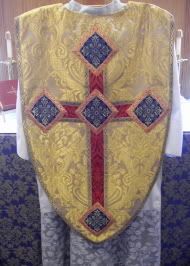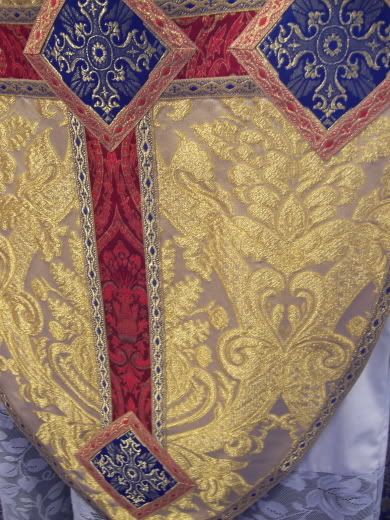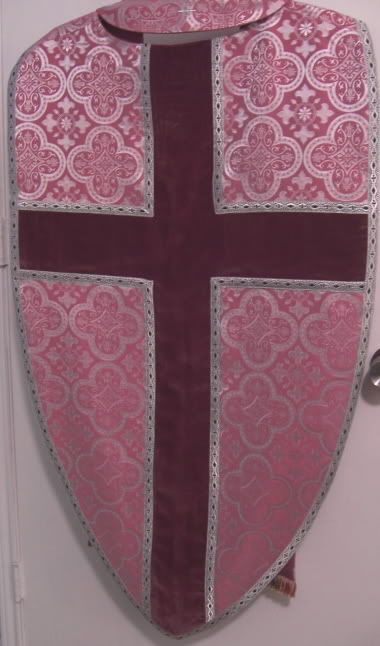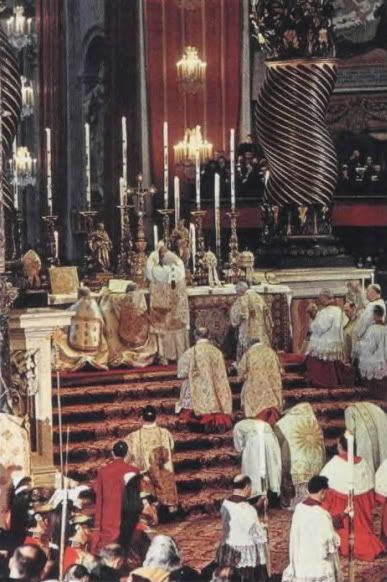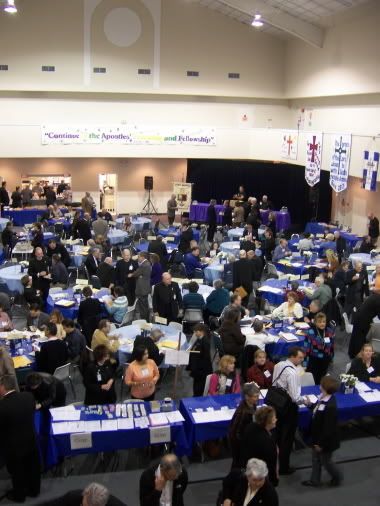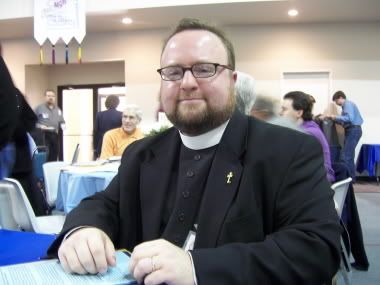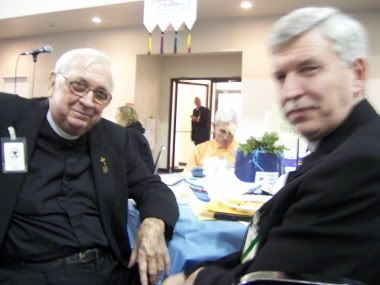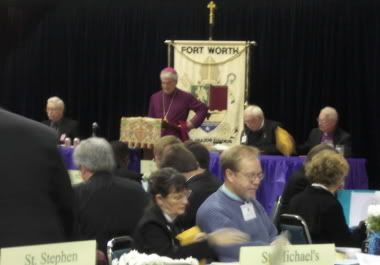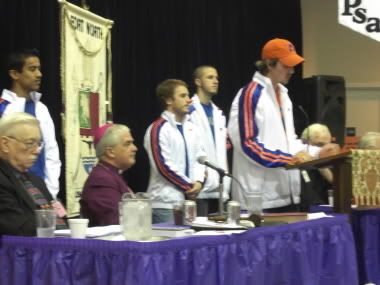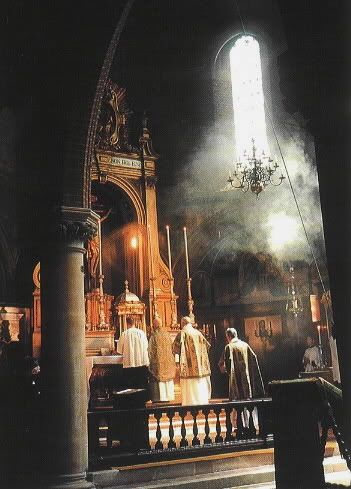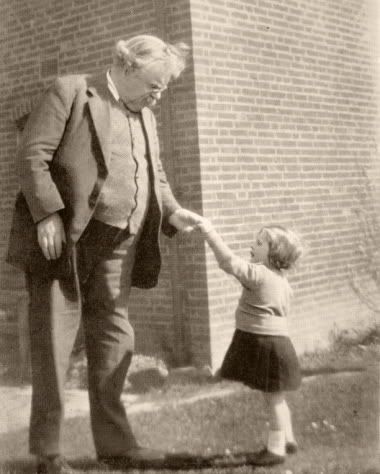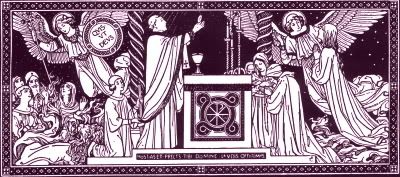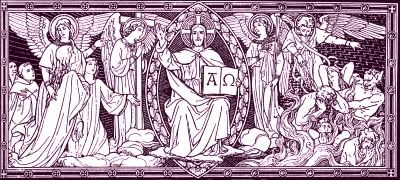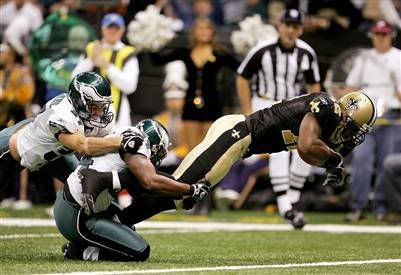 Hebrews 12:1-2Therefore, since we are surrounded by so great a cloud of witnesses, let us also lay aside every weight, and sin which clings so closely, and let us run with endurance the race that is set before us, looking to Jesus, the founder and perfecter of our faith, who for the joy that was set before him endured the cross, despising the shame, and is seated at the right hand of the throne of God.
Hebrews 12:1-2Therefore, since we are surrounded by so great a cloud of witnesses, let us also lay aside every weight, and sin which clings so closely, and let us run with endurance the race that is set before us, looking to Jesus, the founder and perfecter of our faith, who for the joy that was set before him endured the cross, despising the shame, and is seated at the right hand of the throne of God.Commemorating the feast of All Saints, we give thanks for the multitude of God’s servants who have gone before us—both those we recognize throughout the year, and the many more who are unknown to us. We also give thanks for that central doctrine of the Christian faith—the communion of saints.
In ancient creeds of the Church, the Apostles’ and Nicene Creeds, we confess our belief in the communion of saints. The catechism in the Prayer Book defines that mystery this way: "The communion of saints is the whole family of God, the living and the dead, those whom we love, and those whom we hurt, bound together in Christ by sacrament, prayer, and praise" (BCP 862). As we honor the saints, we also join with them as family in the worship of God.
Both the Old and New Testaments speak of the saints, literally the "holy ones." The saints are those who are holy, the followers of an all-holy God. Baptized believers are saints, not because of our own merits, but by the grace of our new birth in Christ and our adoption into God’s own household. They are set apart as God himself is set apart. In the earliest parts of the New Testament, "saint" is just a name for Christian. St Paul takes up a collection for the saints (the "holy ones") at Jerusalem. But the term quickly began to imply something more. St Paul addressed Christians in his letters as those who are "called to be saints."
All of us are holy ones also because of our vocation to holiness. By God’s design, all of us are called by God to be conformed to the perfect and holy image of his Son Jesus Christ. And since that time, the saints have been those revered heroes of the faith who have really shown us how it is done, by fully embracing God in this life. They have finished the race of life, persevered to the end in faith, and now they cheer us on as a great cloud of witnesses.
Our devotion to the saints is a vital part of our belief in the Incarnation (that God embraced a human nature) and our belief in the Resurrection (that Jesus was raised to new life, and ascended with our humanity). As the Prayer Book puts it, our hope in devotion to the saints is that "encouraged by their examples, aided by their prayers, and strengthened by their fellowship, we also may be partakers of the inheritance of the saints in light." May we find encouragement, aid, and strength in all the saints of God.
Each of us are given the same gifts as they were—the virtues of faith hope and love infused at our baptism, and the same sacramental grace to nourish and sustain us. The saints show us how to make the most of it. The deep humility of St Francis, the apostolic and missionary seal of St Paul, the sacrificial spirit of St Polycarp and of St Perpetua and her Companions, the deep learning of St Jerome and of St Thomas Aquinas, the pastoral care of St Alpege and of St Thomas a Becket, the homely spirituality of Lady Julian of Norwich, the dedication of blessed Samuel Schereschewski, and the perseverance of blessed Charles Simeon. All of these examples are but an unfolding of the virtues of faith, hope, and love which are given to us all—an unfolding made possible by God’s grace.
This is what is possible in being joined to Christ through baptism. This is the vocation to holiness made reality by grace. This is the vocation of each and every one of us. Faith in God is what holiness needs first, hope is what it leads to, and charity—the perfect love of God—is its foundation. Holiness of the saints is the maturity of faith, hope, and love. Holiness is not about finding new virtues to practice that the ordinary Christian has not yet found, holiness is about going deeper into those old virtues that are the beginning of every Christian life.
Faith is the saint’s embrace of God himself as Savior and Lord—the source of life. St Paul turns twice to the words of Habakkuk: "The just will live by faith." Faith is a share in God’s life and a share in God’s truth, the truth by which we see the path to Christian maturity. That growth is not automatic, it must be willingly embraced. For the saints, faith and the increase of faith was of the highest value, for it is by our faith that we enter more fully into God’s presence. Faith is the substance of things hoped for, the evidence of things unseen. In their perseverance, they showed us faithfulness to the end.
The hope of the saints (the same hope infused within us) is not just the virtue of looking forward to a heavenly reward, but more especially, saintly hope is the confidence in God to renew our lives even now. Hope starts out knowing that life (even Christian life) is going to be difficult. Hope moves forward admitting that without grace, perfection is out of reach. Hope faces disappointments, temptations, and failures as trustworthy indications that the soul is on the path to greater holiness. Hope trusts in God and presses on, seeing the reality of all the promises of God that lie ahead.
The love of God is the life-blood of the pursuit of personal holiness; there are no saints apart from the cross of our Lord Jesus Christ. When John wrote that "God is love," he was not referring to some abstract philosophical notion of divine being, John was referring to the reality of the incarnate Lord who had shown his love for the whole world in giving up his life right before John’s eyes.
Like attracts like. The love of the saint yearns for the love of God. The closer to God, the more the saint understands a love beyond knowing. The more of God’s love that fills the heart of a saint of God, the more that love mixes with his own and flows into the world. There is no sanctity without charity—no holiness without love. For those who truly embrace God’s love, sanctity cannot but follow. And love is what it takes to make saints out of us miserable sinners.
It has been said that living saints are meant to be like the saints we see in our church windows—giving color and shape to a Light from beyond. For the dedication of new stained glass windows in my home church growing up, a saintly friend of mine once put it this way: we are
fragments of glory.
